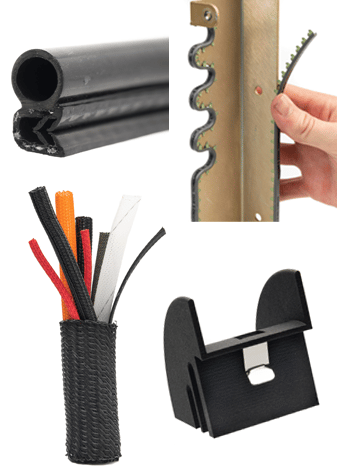What happens if there’s kink in a fiber optic network cable in your company’s server room? What happens if a fiber optic cable coming through a wall conduit ‘snags’ and bends before it reaches your computer?
Slower download speeds? Lost data? Or worse – complete network failure? Fiber Optic Cabling Today’s computer networks are an integral part of any business infrastructure – large or small. Today, all businesses are requiring larger and larger amounts of data to be transferred — faster than ever before.
These ever increasing demands continue to transform the way fiber optic networks are designed and installed. Fiber optic cable can transmit an incredible amount of data at increasingly speeds if no kinks or bends develop along the route. When a fiber cable is bent too sharply, the optical signal within the cable may reflect or refract internally or it may literally fail to make the turn, escaping through the fiber cladding. Bending can also induce micro cracking, causing permanent physical damage to the individual fibers that make up the cable, especially as it is pulled during installation.
Design engineers are aware that fiber optic cable management is an ongoing, critical issue. If minimum bend radii of are not properly maintained, signal integrity is lost, causing detriment to transmit data. Typically, these bends occur as the cable runs into a server rack or through a conduit. When fiber optic cables exit from cabinet architecture, they are often routed over and through sheet metal panel edges. Over time, abrasions, snags, cuts and bad bends often occur as the fiber optic cable comes into contact with the sharp metal edges of a rack or conduit.
Solutions
To prevent these types of failures, it is essential to utilize a cable management solution that maintains the minimum bend.
Effective Fiber Optic Cable Routing Prevents Problems
By Hector D. Petri
www.cablingbusiness.com June 2007 page 27
radii of the fiber optic cable.
When selecting a cable management solution, design engineers should keep the following key decisions in mind:
1. Can my radius control solution accommodate multiple mounting possibilities? Look for a universal solution that will mount on sharp edges or with a clip or screws. In addition, a flexible solution will adapt horizontally and vertically, and can be configured in a 90-degree drop-down, as well as in 180-, and 360- degree service loops.
2. Does my solution offer flexibility in sizing, or is it “one size fits all?” Some cable management solutions do not offer a range of size options. This inflexibility could limit usage in small spaces or mandate updating each time that a fiber optic system expands.
3. Can my solution be configured into a service loop application? It is helpful to choose a system that can create service loop applications for large-load cable support or for future system expansion.
4. Does my solution have a hook-and-loop strap option? More than an additional feature, these straps are built into many cable management solutions to secure fiber optic cables firmly in place, and facilitate repairs or modifications.
5. Does my solution meet UL 94V-0 flame retardancy specifications? As control cabinets are a potential ignition source, any cable management solution must meet the high flame-retardant standards of UL 94V-0, Telcordia, or MIL-STD. Cable protection products are a critical component that ensures consistent data transmission in a wide range of telecom and data-networking applications including system patch panels, fiber nterconnect panels switches, routers, multiplexers, raceways, and more.
Radius Control Solutions (RCS) must be designed to ensure a precise 90-degree curve of a radius sufficient to provide the correct minimum bend for fiber optic cables, ensuring consistent data transmission. Without it, cables can bend too sharply, inducing internal reflection and potentially snapping fibers, both at least detrimental, if not catastrophic to data flow. Bend Radius Control Modules (BRCM) are a simple, yet efficient solution that can protect and organize fiber optic cables to ensure maximum data transmission output. They are easy to install and flexible enough to be positioned either horizontally or vertically to fit custom application requirements. To create a 180-degree return service loop, two modules can be mounted facing each other. Two such returns can be configured into service loop applications to organize and protect extra lengths of cable. Hook-and-loop straps that secure cables in place add to the protection BRCMs provide. To withstand the rigors of harsh industrial environments, BRCMs need to be fire-retardant and impact resistant, as well as rigid enough to withstand large bundle loads and protect against macro bending kinks.
For telecom applications, BRCMs offer the best protection against the optical fiber within the cable reflecting or refracting internally, or failing to make the turn and escaping through the cladding. It also eliminates a lot of the damage that typically occurs when the fiber optic cable exits from cabinet architectures and is routed over and through sheet metal panel edges. Over time, there is potential for abrasion and snags as the cable is exposed to sharp metal objects. The time to decide on adding the critical protection of Bend Radius Modules is NOT when a failure occurs. The simple, flexible and versatile solution they deliver makes them easy to design into any new or existing fiber optic cable system.

